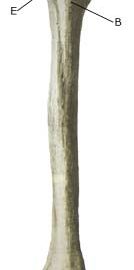|
||
|
||
| Cause: A fracture of the humerus can occur in cases of a direct fall on the shoulder or outstretched arm. The fracture may occur anywhere on the humerus, but a fracture through the neck of the humerus (collum) and the middle of the long tubular bone (corpus) are the most common locations.
Symptoms: Sudden pain and pain induced constriction of movement of the arm and shoulder after a fall. Acute treatment: Click here. Examination: Sudden, powerful pains in the arm with constriction of movement after a fall, should always lead to acute medical examination. The fracture is usually visible on x-rays, and on the basis of the type of fracture, the correct treatment can be determined. Treatment: Depending on the type of fracture, rest and possible use of bandaging until pain decreases and the fracture is fixed (which usually takes approx. 6 weeks). Most fractures are treated non-operatively (article). In certain types of fractures, an operative fixation is an option. Rehabilitation: When pain has decreased (after 2-3 weeks) physical training in the form of cycling may be started along with retraining as specified under rehabilitation, general. After approximately 4-6 weeks running can be commenced, and subsequently careful training of the upper arm and shoulder muscles. Participation in contact sports will be possible after approx. three months have elapsed. Bandage: Special plastic bandages can be made for use when contact sports are resumed. Complications: In the vast majority of cases the fracture heals without complications, although in some cases a delayed healing occurs, possibly with the development of a false joint (pseudoartrosis) requiring (renewed) surgery. In some cases, the fracture can affect the nerve supply to the arm (N radialis), which can cause sensory disturbances in the hand (and is usually treated with (renewed) surgery). |


